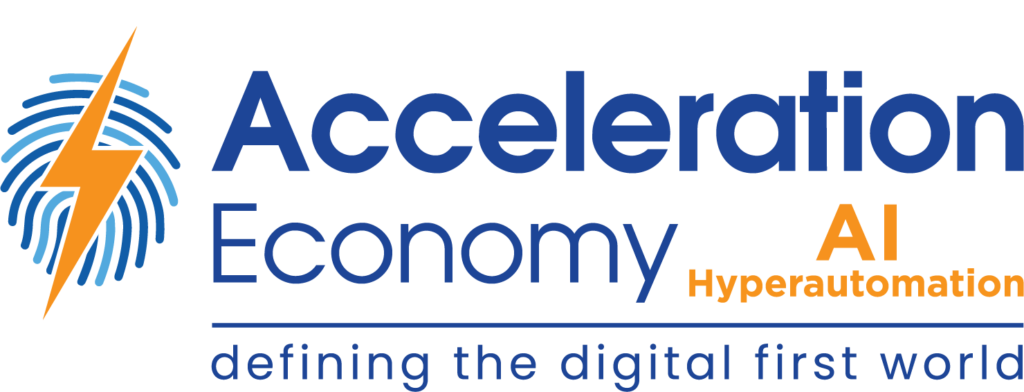We’re all familiar with the capacity of artificial intelligence (AI) for planning and management, with uses such as predicting stock levels, intelligent automation, finding weak spots in your supply chain, or understanding your customer more deeply.
AI can also be used to automate creative tasks for everything from website copy and marketing materials to product design and coding for your company, with the potential to dramatically reduce development and production time and budgets while still maintaining consistency and control over output. Implementing AI into these workflows requires investment, but once in place, it can help speed up some parts of the creative process, allowing for scale and timeliness that would normally take more sizeable human resources.
Creative AI isn’t limited to certain sizes of organizations, nor is it exclusive to creative verticals like media or entertainment. It can be applied to any business function that involves strategic communication, whether internal or external, and thereby every industry. As I’ll cover below, there are AI tools available for generating code, artwork, graphic designs, chat assistants, web design, content marketing, product design, and even your Metaverse or NFT plays. These tools are continually evolving and improving, but can already deliver real value to your business. Here are some of the ones to try out and prioritize right now.
NLP and ChatGPT
Natural language processing (NLP) models like OpenAI’s GPT-3 or ChatGPT can craft text that reads as if it were written by a human. Typically, you enter a prompt, and the model generates a text based on its understanding of the prompt. NLP models have been widely used in chatbots, translators, voice assistants, social media monitoring, and search engines.
NLP models can be used to help generate content for you nearly instantaneously, ranging from initial drafts of blog posts to video scripts to copywriting. They can also be used to gather inspiration or lay the groundwork for human creatives to finish the job. As an easy way into NLP, check out OpenAI’s recently released ChatGPT. It’s a web-based chat service running one of the largest currently available language models, with more than 175 billion parameters.
Companies can use ChatGPT in several ways:
- To generate text: This can be a useful tool for generating ideas for content, outlines that organize information, and creating rough drafts of articles and other written materials. It’s important to note that any text generated by ChatGPT must still be reviewed, edited, and fact-checked by humans, as it’s not always terribly deep or accurate.
- To summarize or extract information from text: ChatGPT can be used to automatically summarize large amounts of text, extract important keywords and phrases, or identify the main topics and themes in a body of text. This can be useful for quickly generating content ideas or creating summaries of long articles.
- To improve the quality of text: ChatGPT tends to be spot-on in terms of grammar, spelling, and syntax. While its writing may not be the most creative, and its content not terribly deep or always factual, it would pass basic high-school English class grammar and syntax reviews with flying colors.
- Using ChatGPT to create conversational agents: This can be a powerful tool for creating engaging content in the form of interactive conversations for applications such as customer support chatbots.
And guess who created the shell and outline of the above four bullet points? ChatGPT. That said, this list wasn’t quite ready for prime time right out of the box: It needed a substantial edit not only for optimal formatting, but also to add some of the finer points, such as the technology’s limitations, as well as specific examples to back up points. While ChatGPT can easily craft perfectly correct sentences and paragraphs, it often creates copy that’s missing something, that begs questions, but its ability to deliver a basic outline that can be perfected with some human edits is definitely a time-saver.
Generative AI: DALL-E 2 and NeRFs
Creative AI isn’t limited to text. DALL-E 2, a large generative model that is also developed by OpenAI, can generate images from text descriptions, which can be a useful tool for creating visual content. For example, a company could use DALL-E 2 to generate images of products, logos, or other visual elements for use in marketing materials or on its website. DALL-E 2 can also be used to support product design and development by generating images of potential designs or ideas. This can help companies explore a wider range of design options and quickly iterate on ideas without the need for physical prototypes. (As a side note, this paragraph — excluding this line and the first— was also written by ChatGPT.)
Nor is creative AI limited to two dimensions. So-called NeRFs, or neural radiance fields, can recreate 3D objects with extremely high fidelity simply by scanning that object with a mobile phone from different directions. A powerful alternative to photogrammetry, NeRFs can be used to expedite product iterations or help stakeholders visualize complex 3D scenes quickly. A great place to start with this technology is Luma AI.
Autocoding: Copilot, Tabnine, Code5, Polycoder
In addition to text and visuals, models like GPT-3 can actually be used to generate code. There are many consumer services on the market that help developers auto-complete their code using artificial intelligence, including GitHub’s Copilot (based on GPT-3), Tabnine, CodeT5, Polycoder, and others. Your software engineers or engineering managers have probably already integrated these tools into their workflows. If they haven’t, at least make sure they have the resources and freedom to do so. Their productivity will multiply as a result.
Important Considerations for Implementing Creative AI
AI can help companies creatively, and at high speeds and ever-expanding scale, but it must be used and implemented responsibly. As with any software, it must adhere to strict quality assurance, internal ethics standards, data privacy, and security laws. Ensuring that humans are a part of the process for everything from fact-checking to optimization to final reviews — s imperative. Developer-FAQ site Stack Overflow recently banned ChatGPT-generated content after it found that many of its AI-created answers were full of faulty code snippets; the ban was the result of decisions that needed to be made by human moderators.
At the very least, make sure to label content that is machine-generated — too much of the internet is already generated with no clear distinction as to where something came from. I’m convinced that, at some point in the future, a majority of what you see and read on the Internet will not be created by humans but will, instead be created by machines. These tools can go a long way toward helping anyone generate serviceable visual and written content, and it’s interesting to see how far they can be pushed, but ultimately, for now, factors such as quality control and human oversight will have the best impact on the accuracy and quality of a final product.
Looking for real-world insights into artificial intelligence and hyperautomation? Subscribe to the AI and Hyperautomation channel:











